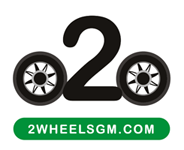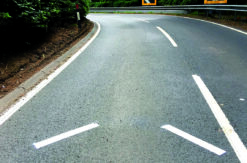
If you are planning a long-distance ride this autumn, the National Highways has some simple advice: have a good TRIP.
In National Highways’ case, the good TRIP is its acronym for a checklist to keep you safe.
It stands for:
- T – Top–up – fuel and oil – and check all electrics and lights are working
- R – Rest – take a rest break every two hours
- I – Inspect – check tyre pressure and tread
- P – Prepare – have a plan for all weather conditions
This Autumn, National Highways says its focus is on the ‘inspect’ element of the T.R.I.P acronym, with a call to prioritise checks on tyres before setting off.
National Highways says: “With weather conditions very changeable during autumn, we are calling for drivers pay special attention to their tyres before setting off.
“Surveys find that more than half (55%) of UK drivers and riders don’t check their tyre tread most or all of the time before a long journey that’s longer than two hours.
“So our message is, be tyre confident and check them before embarking on long journeys this autumn.”
As a reminder:
It’s vital bikers check the tyres for bulges, cuts and scrapes. If there is a deep gouge in the rubber, or a bulge, replace them. It is a sign the tyre may fail any time soon.
It is also important to check the tyre tread. Tread ensures a tyre stays in contact with the road during wet conditions. You need to be aware of the minimum legal limit for your size of motorcycle.
- The legal limit of tyre tread depth in the UK for motorcycles over 50cc is 1mm across ¾ of the width of the tread pattern and with visible tread on the remaining ¼.
- For motorcycles up to 50cc the law requires that all the grooves of the original tread pattern must be clearly visible.
To check your tread, check out the tyre wear indicators. These are included in the tyre design, inside the treads. They give a good indication of how worn your tyre is. When the wear is close to the wear indicators, it means that the tyre needs to be changed.
They can be hard to spot at first, so manufacturers usually carve markers into the tread. Michelin tyres, for example, have little 'Michelin Man' markings on the rubber. They are there to indicate the location of wear indicators.
Have a look at your tyres now and see if you can spot the tyre wear indicators. If you can’t, Google the type of tyre and ask for more information on where they can be found.
Investing in your own tyre depth gauge is a good idea, too.
Check the tyre pressure, too. Your bike handbook will tell you what the pressure is meant to be. Check and top up regularly.
By riding on faulty tyres you will be putting your life at risk. Defective tread or incorrect pressure makes your tyres less efficient at gripping the road, increases the chance of a skid and won’t drain away surface water effectively.
The tyres are the only thing gripping the road: look out for them.


